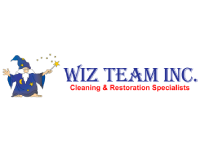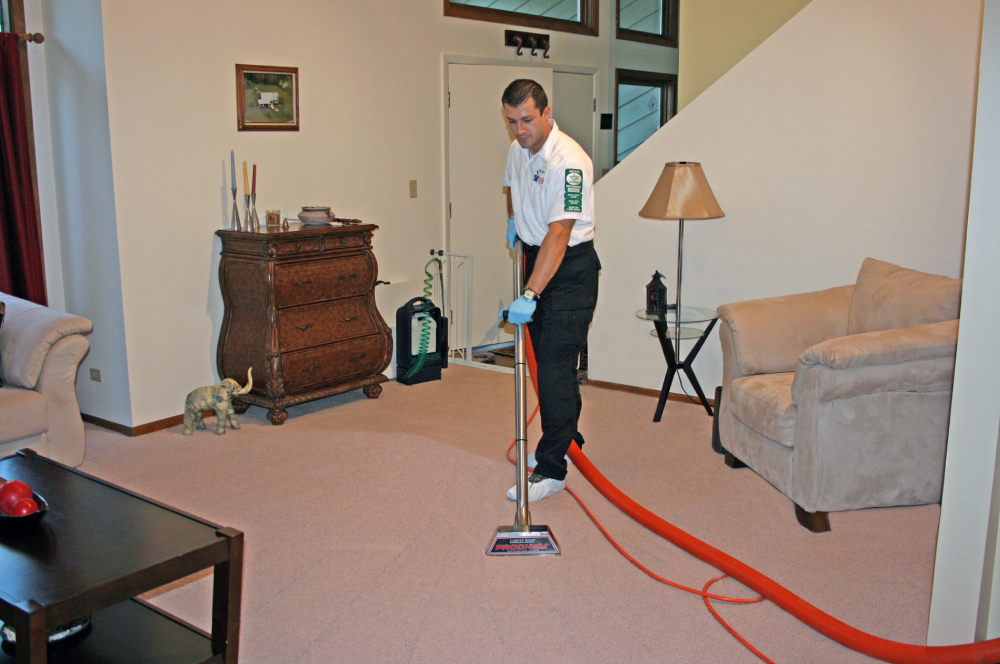Carpet cleaning is essential to maintaining the beauty, longevity, and hygiene of indoor spaces. Over time, carpets accumulate dirt, allergens, moisture, and bacteria that not only affect the appearance of the floor coverings but also impact indoor air quality and overall health. In today’s fast-paced world, many homeowners and business managers face the dilemma of whether to hire professional carpet cleaning services or try a do-it-yourself (DIY) approach. This article addresses the risks associated with improper cleaning, examines the benefits of professional water extraction and hot water extraction techniques, and compares them with common DIY methods, which often fail to provide a deep clean. We will explore aspects such as machine efficiency, the dangers of water damage, and long-term care strategies to prevent mold, allergen buildup, and wear and tear. Additionally, the article outlines practical methods for regular carpet maintenance and explains how professional treatments improve indoor air quality and reduce allergens—a critical benefit for those with asthma or allergies.
By understanding the detailed processes behind professional carpet cleaning—from the initial inspection and identification of carpet materials to the expert application of cleaning solutions and advanced drying techniques—the reader will appreciate the value of professional services compared to a DIY approach. With professionals often guaranteeing results while reducing the risks of water damage, mold growth, and premature wear, customers can make informed decisions about their carpet maintenance. This guide highlights technological advancements in cleaning processes while addressing concerns about allergies, pet stains, stubborn debris, and odors from urine or wine spills. Ultimately, it provides actionable information about cost-effectiveness, risk management, and the environmental benefits of different cleaning methods.
Transitioning from general understanding to specific insights, the following sections provide an in-depth analysis of the benefits of professional carpet cleaning services, a direct comparison to DIY techniques, key considerations before hiring a service, and long-term care strategies to preserve carpets effectively.
Understand the Benefits of Professional Carpet Cleaning Services
Professional carpet cleaning services provide a level of deep cleaning and sanitation that most DIY solutions cannot match. Experts use advanced equipment—such as hot water extraction machines and industrial-grade vacuum cleaners—to remove deeply embedded dirt, allergens, and bacteria from carpet fibers. By relying on professional services, homeowners ensure every inch of their carpet is thoroughly cleaned, enhancing its appearance and extending its lifespan.
Discover How Experts Ensure Deep Cleaning and Sanitation
Professional carpet cleaners begin by assessing the type of carpet and the nature of the stains or contaminants present. This evaluation helps them choose the best cleaning method—whether hot water extraction, steam cleaning, or specialized solvents for stubborn stains. Their equipment is designed to extract water quickly, minimizing the risk of mold or mildew. Advanced machine technology ensures dirt particles and allergens such as dust mites, pollen, and pet dander are effectively lifted from the fibers. For example, professional water extraction can remove up to 90% of allergens, significantly improving indoor air quality.
In addition, eco-friendly and non-toxic cleaning agents used by trained technicians help break down stains without damaging delicate fibers. Cleaners follow standardized protocols, using specific water temperatures and extraction pressures to achieve deep sanitation and prevent issues like carpet degradation or water damage.
By integrating diagnostic techniques and grease-cutting chemicals, experts rejuvenate high-traffic areas and carpets with stubborn stains. Their systematic approach starts with pre-treatment of stains followed by comprehensive hot water extraction that flushes out embedded dirt. This two-step process actively eliminates contaminants, including bacteria and mold spores, so customers enjoy a visibly cleaner carpet and an improved sense of well-being.
Realize the Long-Term Advantages for Carpet and Health
Professional carpet cleaning extends far beyond a superficial clean. Regular sessions help maintain the integrity of carpet fibers, reducing wear and tear while preserving texture and color. Over time, residual dirt can cause friction between fibers, leading to premature aging and deterioration. Proper cleaning techniques help preserve a carpet’s resale value and extend its useful life, resulting in significant cost savings by delaying replacement.
From a health perspective, removing allergens and bacteria plays a key role in improving indoor air quality. Carpets act as reservoirs for pollutants that trigger respiratory issues such as asthma and allergies. Regular, effective cleaning reduces these irritants, creating a healthier living environment. Households with young children and pets benefit from scheduled professional cleanings, which minimize the buildup of harmful pathogens and dust. Advanced services may also incorporate antimicrobial treatments, providing long-lasting protection against bacteria and mold.
Furthermore, professional cleaning technologies reduce common indoor contaminants by over 70%, making them a worthwhile investment for health-conscious individuals. The enhanced cleanliness boosts aesthetic appeal while reducing musty odors that indicate neglected carpets. Overall, opting for professional cleaning ensures immediate satisfaction with a spotless carpet and long-term benefits like healthier air and reduced respiratory risks.
Recognize the Expertise in Tackling Tough Stains and Odors
Dealing with persistent stains and odors is a common challenge that DIY methods often cannot overcome. Professional carpet cleaners are equipped with specialized tools and cleaning agents to target contaminants such as wine, urine, and grease. Their expertise lies in understanding the chemical composition of stains and applying the appropriate treatment to dissolve them. For example, pet urine stains, which can harbor bacteria and emit lingering odors, are effectively neutralized by enzymatic cleaners designed to break down proteins.
Professional cleaners also understand the different behaviors of water and cleaning agents with various carpet fibers. They avoid over-wetting—one of the main risks in DIY cleaning—to prevent water damage and mold growth. Instead, they use controlled extraction methods that balance moisture removal with effective cleaning. Their advanced odor neutralizers penetrate deep into the carpet’s base to eliminate odor-causing chemicals, providing long-lasting protection.
Compare DIY Carpet Cleaning Techniques to Professional Methods
When comparing DIY carpet cleaning to professional methods, several factors—cost-effectiveness, efficiency, and overall results—come into focus. DIY solutions, which often involve renting machines or using store-bought products, might seem more affordable upfront. However, these methods usually fail to deliver a deep clean and can risk water damage, residue buildup, and carpet degradation over time.
Evaluate Cost-Effectiveness of DIY Versus Professional Cleaning
DIY carpet cleaning appears to save money by eliminating labor costs. Yet, its efficiency is questionable since household machines generally do not match the performance of industrial-grade equipment. Homeowners using rental machines or over-the-counter agents might use excessive water or incompatible chemicals, leaving behind residues that attract dirt and dull the carpet’s appearance. These issues often lead to more frequent cleanings and increased long-term maintenance costs.
In contrast, professional cleaning services offer a comprehensive cleaning that often achieves results in a single session. Although professionals charge more initially, long-term benefits include extended carpet life and fewer recurring cleaning sessions. Their specialized tools balance water and cleaning solution usage, ensuring efficient extraction and preventing moisture retention—a common cause of mold and bacteria growth. Additionally, services may include stain protection and antimicrobial treatments, further enhancing carpet longevity and indoor air quality.
The true cost-effectiveness of professional cleaning becomes evident over time, considering fewer cleanings, a longer carpet lifespan, and reduced health risks related to allergens and contaminants. Many service providers also offer maintenance plans that further optimize long-term savings.
Assess the Limits of Homemade Cleaning Solutions
Homemade cleaning solutions, such as vinegar, baking soda, and water mixtures, may offer temporary relief for surface stains and light cleaning tasks. However, these methods rarely achieve the deep-clean effect needed to remove embedded dirt and allergens. They can leave behind chemical residues that attract more dirt, reduce the effectiveness of subsequent cleanings, and even damage carpet fibers. Many DIY products lack the specialized enzymes and surfactants needed to break down complex stains like pet urine or red wine.
Moreover, without proper knowledge of carpet fiber types and water extraction techniques, DIY methods can worsen the cleaning process. Excess moisture from homemade solutions may lead to longer drying times, creating an environment ripe for mold growth and unpleasant odors. In some cases, DIY cleaning can even void carpet warranties that require professional maintenance. Overall, while DIY methods may temporarily improve appearance, their imprecision can lead to recurring cleaning issues and higher long-term costs.
Weigh the Pros and Cons of Each Cleaning Method
Professional cleaning offers high efficiency, deep cleaning capabilities, and the use of specialized equipment that ensures complete removal of dirt, allergens, and stains. Trained technicians minimize risks such as over-wetting and improper chemical use. They also provide additional benefits such as odor neutralization, antimicrobial treatments, and protective coatings that extend the carpet’s lifespan.
DIY methods, though offering a sense of control and perceived initial cost savings, often require significant time and effort and produce inconsistent results. They carry risks of water damage, mold growth, and accelerated carpet wear due to improper cleaning techniques. Considering both the monetary expense and potential risks, the long-term benefits of professional carpet cleaning generally outweigh the short-term savings of DIY approaches.
Identify Key Considerations Before Choosing Carpet Cleaning
Before selecting a carpet cleaning method, property owners must evaluate several key factors. These include understanding the carpet’s composition, acknowledging health concerns or allergies within the household, and considering the environmental impact of the cleaning method. Each factor plays a critical role in ensuring effective cleaning that preserves the carpet’s longevity and contributes positively to indoor air quality.
Understand the Type of Carpets and Materials in Your Home
Carpets come in various materials—from synthetic fibers like nylon and polyester to natural fibers like wool—each with its own vulnerabilities and cleaning requirements. Professional services typically begin with a detailed inspection to determine the specific cleaning needs of the fibers. Wool carpets, for instance, require a gentler process to avoid shrinking or texture alteration, whereas synthetic fibers can handle more aggressive methods.
By understanding carpet composition, homeowners can select a cleaning method that preserves their carpet’s appearance and texture. Professional services use custom cleaning solutions tailored to each fiber type, ensuring even distribution without damage. In contrast, DIY methods that apply a one-size-fits-all solution may lead to uneven cleaning, discoloration, and accelerated wear.
Furthermore, identifying high-traffic areas and spots prone to heavy soiling is essential in determining whether additional treatments, such as pre-treatments or booster sessions, are necessary. This evaluation is particularly important in homes with children, pets, or heavy foot traffic, where dirt and allergens accumulate more rapidly.
Evaluate Potential Health Concerns and Allergies
Indoor air quality is closely linked to the state of carpet cleanliness. Carpets can harbor allergens such as dust mites, pollen, pet dander, and mold spores, which may trigger respiratory issues and allergies. Before choosing a cleaning method, homeowners should assess any chronic allergies or respiratory conditions in the household. Professional cleaners not only remove visible dirt but also employ specialized treatments to eliminate allergens and microbial contaminants.
For individuals with severe allergies, certified green cleaning solutions and advanced water extraction systems help reduce chemical residues and effectively remove harmful particles. In contrast, DIY methods may leave behind residues that exacerbate allergy symptoms or cause irritation.
Learn About Environmental Impacts of Cleaning Methods
Modern consumers are increasingly concerned about sustainability. Professional carpet cleaning companies emphasize the use of eco-friendly, biodegradable cleaning agents that minimize harmful runoff and indoor air pollution. Their efficient water extraction techniques also reduce water consumption and waste.
Conversely, some DIY cleaning methods rely on chemicals that can be hazardous to both human health and the environment if not properly disposed of. Overuse of water in DIY approaches can be unsustainable, particularly in regions facing scarcity. For environmentally conscious consumers, choosing a service committed to green practices, such as Wiz Team Inc, which offers professional carpet cleaning service, is essential.




